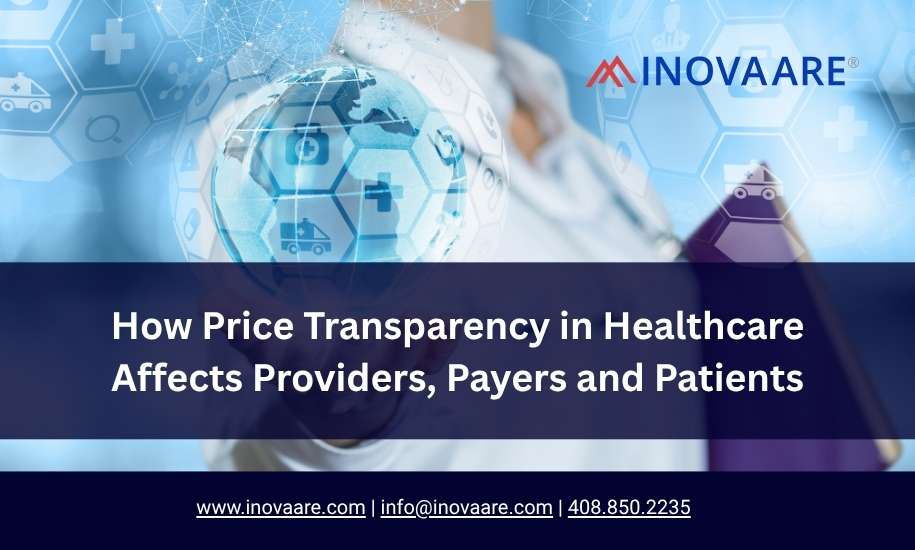Price transparency is a term that has recently become a leading factor among healthcare payers and providers. It’s a tool used to help patients know the price of a hospital service or product before receiving it.
As of January 1, 2021, every hospital within the U.S. was required to post pricing data regarding products and services in one of two ways:
- A machine-readable digital file that contains standard costs for the following services: gross charges (list prices that are not typically billed to insurers), discounted cash prices, payer-specific negotiated charges (a negotiated rate paid by an insurer), and de-identified minimum and maximum negotiated charges.
- A display of shoppable services that makes it easy for consumers to view the itemized pricing of their hospital visit. In theory, the Hospital Price Transparency Rule makes it easier for patients to understand their hospital bill before undergoing a procedure as well as preventing confusion in terms of billing. In reality, patients are provided with numerous and somewhat conflicting sources of pricing data.
These prices can come from the:
- Hospital Price Transparency Rule
- Health insurer Transparency in Coverage Rule
- No Surprises Act
Key issues in seamless implementation of healthcare price transparency
Unrelatable pricing information availability to health plan members: While hospitals are working to provide these pricing estimates for what patients are going to be billed prior to a procedure, the very nature of hospital pricing and rate negotiations between insurers and providers is that it cannot be converted into the single and fixed rate that price transparency requires.
Inadequate healthcare compliance reporting: Third-party compliance reports often fail to report whether hospitals are complying with the Hospital Price Transparency Rule due to communication errors. To expand upon a fundamental issue regarding price transparency, the chief issue with assessing the value of itemized products and services is identifying comparable episodes of care between multiple hospitals.
Non-standardized code usage practices across the healthcare industry: Every charge that is given to a patient has a written notation that is not standardized between hospitals, which may result in widely varied charges for the same service. Currently, the way that similar services are identified is via MS-DRG codes, which are otherwise known as complication codes. However, these codes have proven to be insufficient, in terms of bundling services, due to these written notations.
No Surprises Act and its potential impact on compliance operations
An important factor within the Hospital Price Transparency Rule is the federally enforced No Surprises Act. This Act seeks to eliminate surprise billing that occurs when insured consumers inadvertently receive care from out-of-network hospitals or doctors that they did not request.
A study by Peterson-KFF demonstrates that surprise billing, as a result of out-of-network providers, occurs in approximately one in five visits. The No Surprises Act aims to protect patients from these billing surprises by:
- Requiring that private health plans cover the out-of-network claims and reduce them to in-network charges
- Prohibiting doctors, hospitals and other covered providers from billing more than an in-network cost for surprise medical bills
In the case that negotiations regarding the payment amount of a surprise medical bill between private health plans and providers fail to determine a singular rate, an independent dispute resolution (IDR) follows.
Before accessing the IDR process, an insurer and provider are required to engage in a 30-business-day negotiation period to attempt to reach an agreement on the out-of-network rate. Following the 30 days, an IDR arbitrator determines the payment amount by choosing either the provider or insurer’s out-of-network rate.
In terms of current enforcement of the No Surprises Act, the federal government has exclusive responsibility over most private health plans via the U.S. Department of Labor (DOL) and the Department of Treasury. This act requires the DOL to annually conduct audits for up to 25 health plans to monitor compliance with the No Suprises Act and report findings to Congress. In terms of enforcement against providers, it is yet to be determined which agency(ies) will enforce state requirements.
Due to the multifaceted nature of the No Suprises Act, there is pushback against the law. The verbiage of the law is highly complex, and sources of data are numerous. Annual health plan audits provide one subset of information to the federal government, while other targeted audits can yield information about compliance. Additionally, a new federal consumer complaints system is yet to be established. As such, it remains to be seen how these new systems will work, independently and in coordination.
Key takeaways for the healthcare industry
These recent healthcare regulatory shifts from CMS have pushed the industry to make price transparency data accessible to all, which was previously unavailable. The volume and value of the published data have unlocked numerous data and analytics possibilities across the board, such as:
- Optimized pricing — Significant analytics opportunity for payers to improve benchmark prices and optimize network contracting strategy
- Lower abrasion — Significant opportunity for providers to extend more transparent cost-of-care clarity to members and reduce abrasion
- Elevated consumerism — Members would have the opportunity to compare network prices and make choices to optimize out-of-pocket expenses
Inovaare knows the world of Medicare, Medicaid and Commercial health plans with extensive hands-on healthcare industry experience. If you would like to discuss how to meet the challenges of a healthcare regulatory environment that changes constantly, please call us at 1.408.850.2235 or Contact Us.
